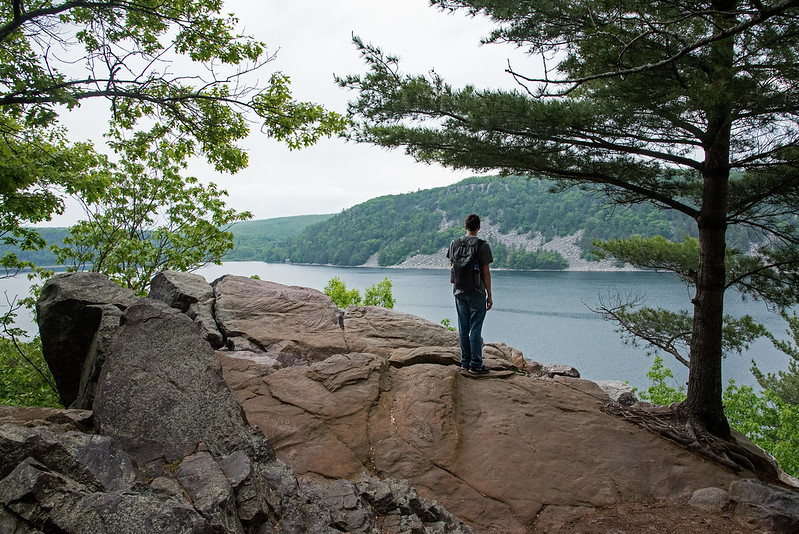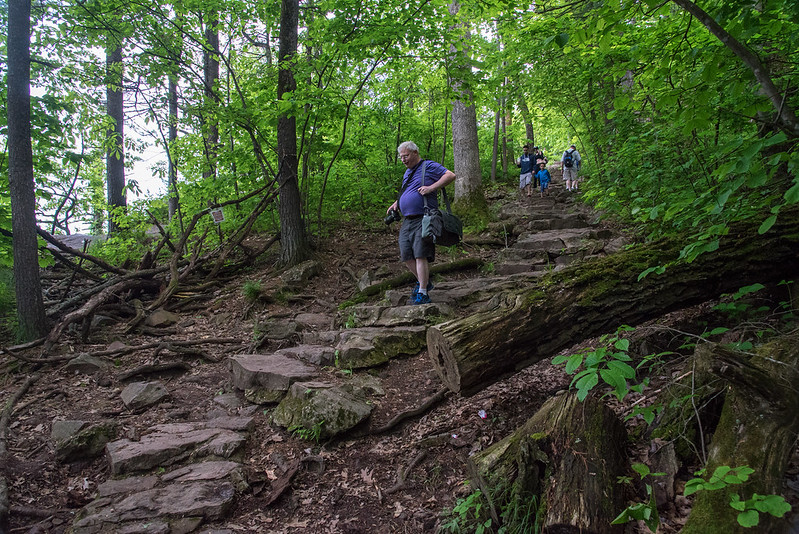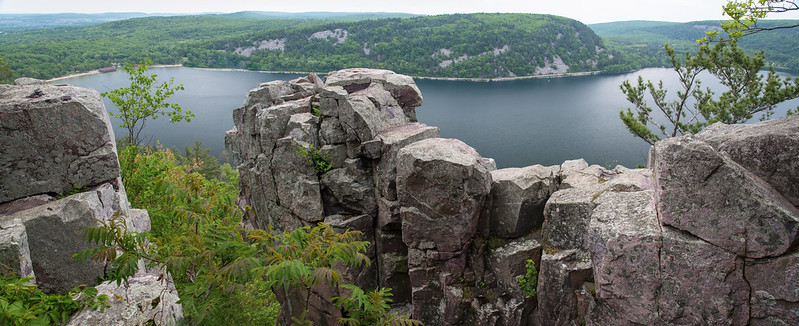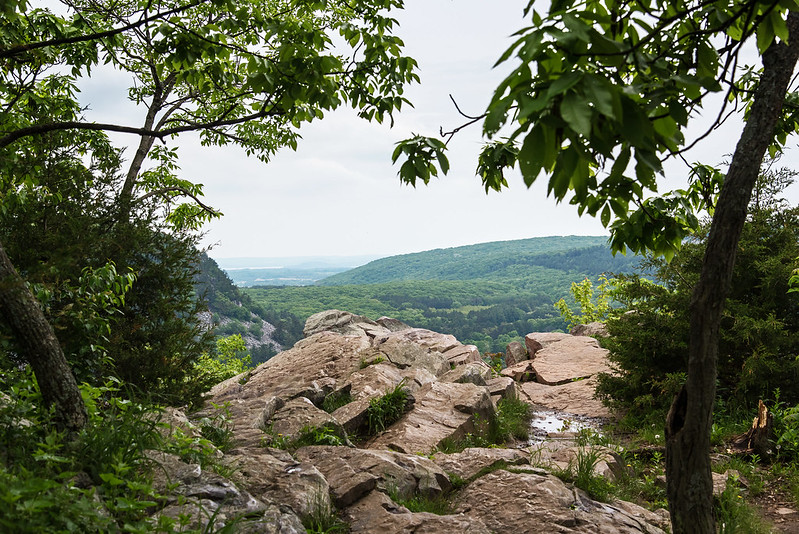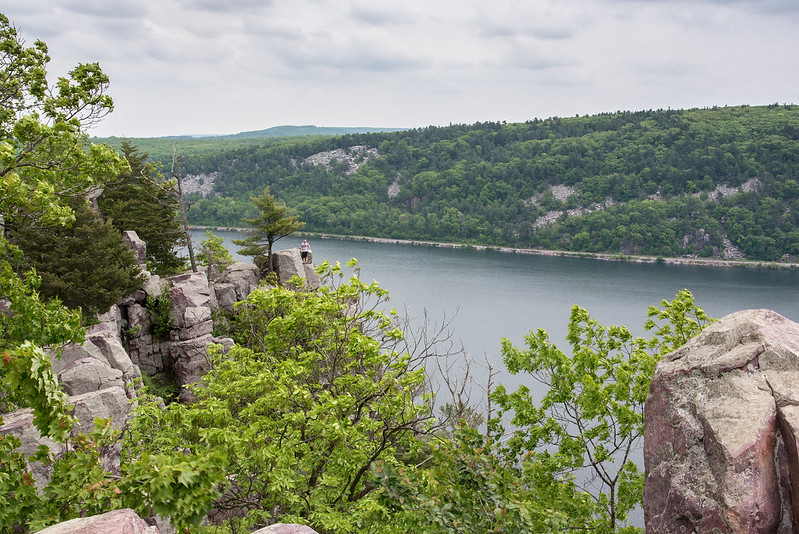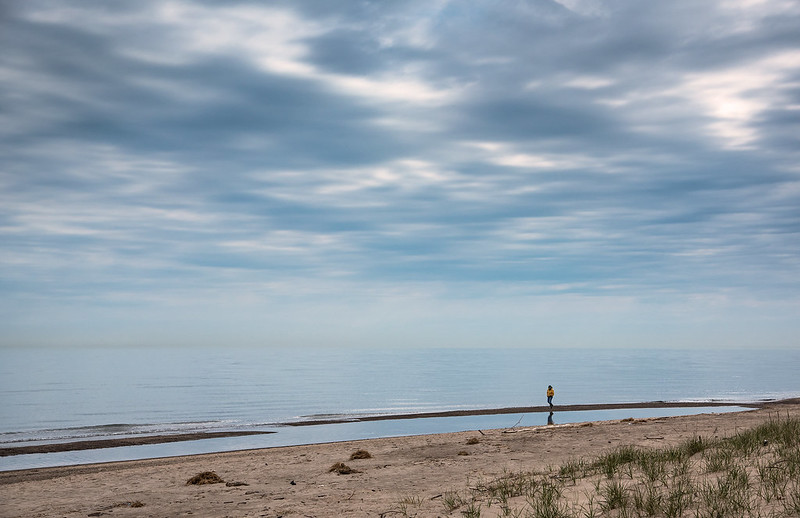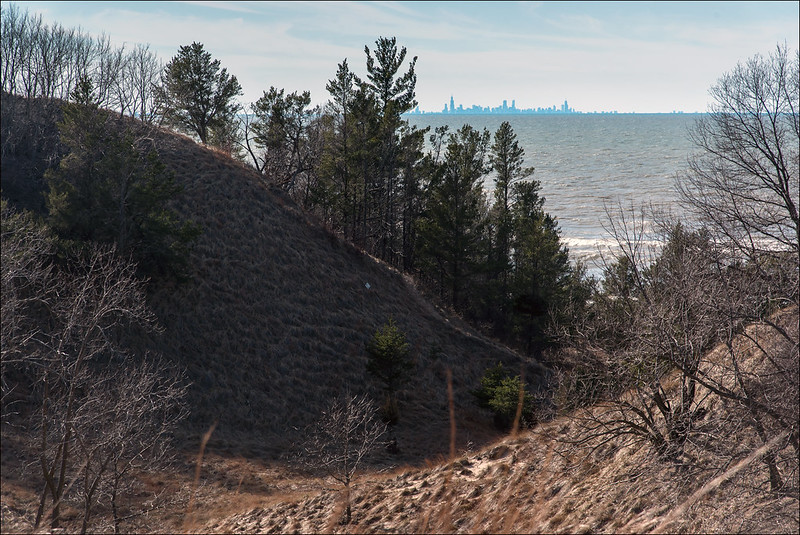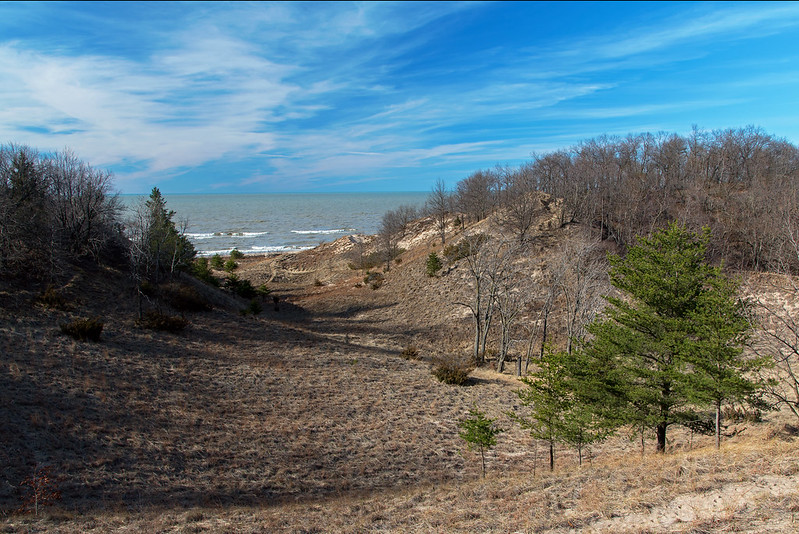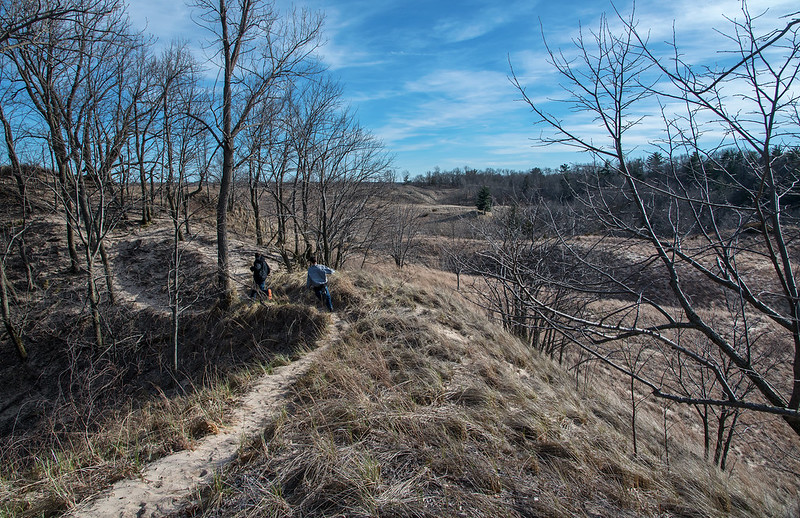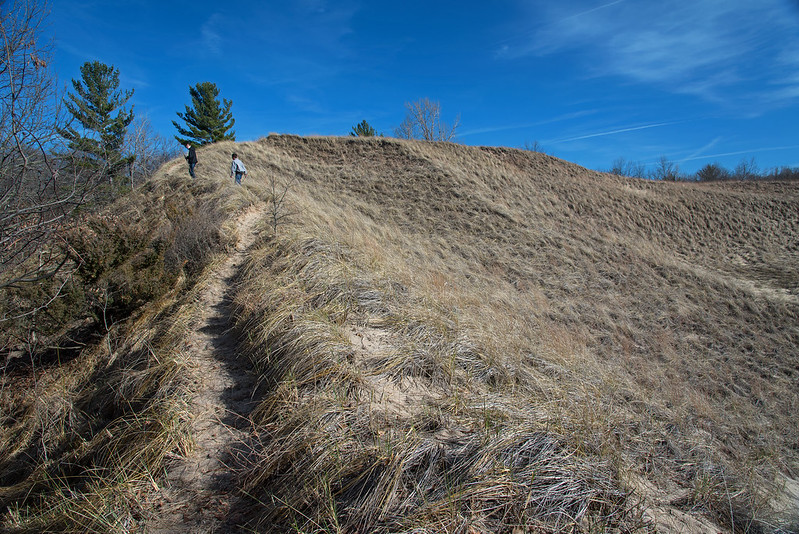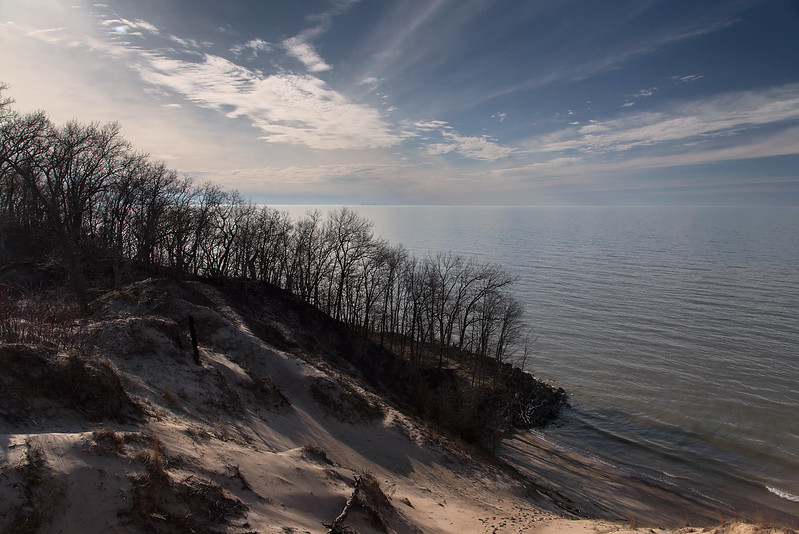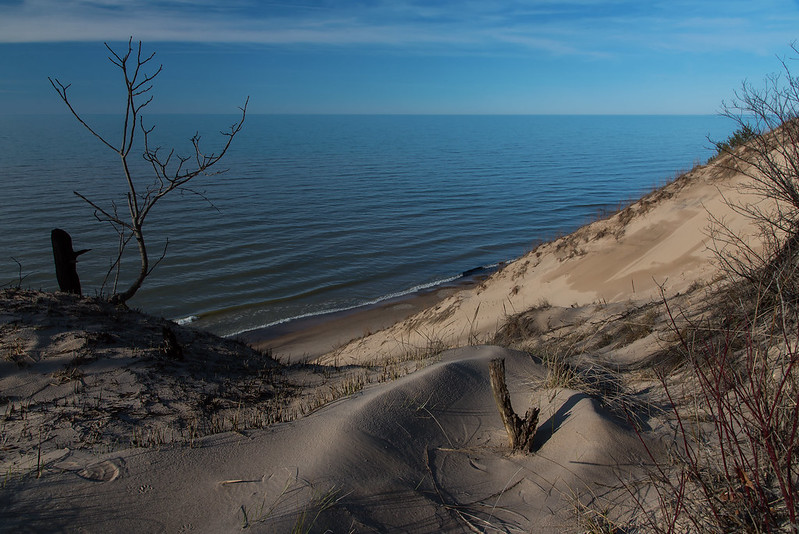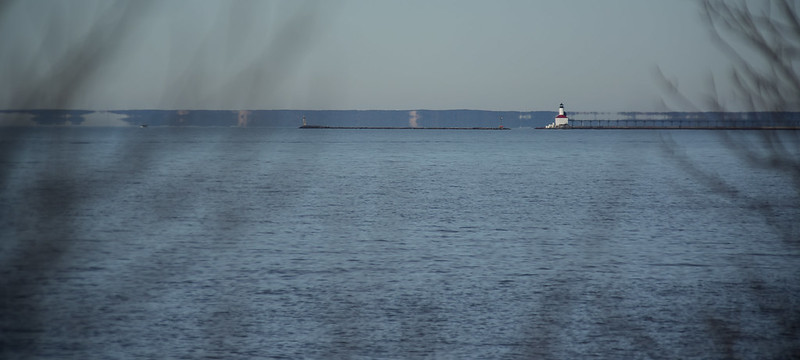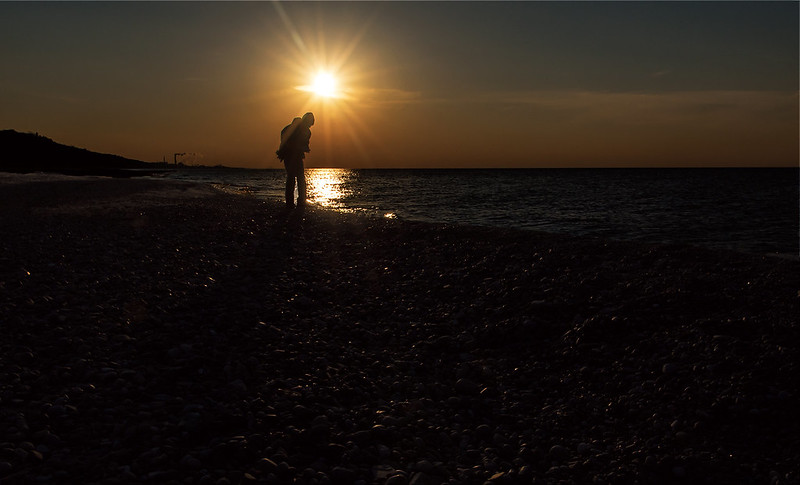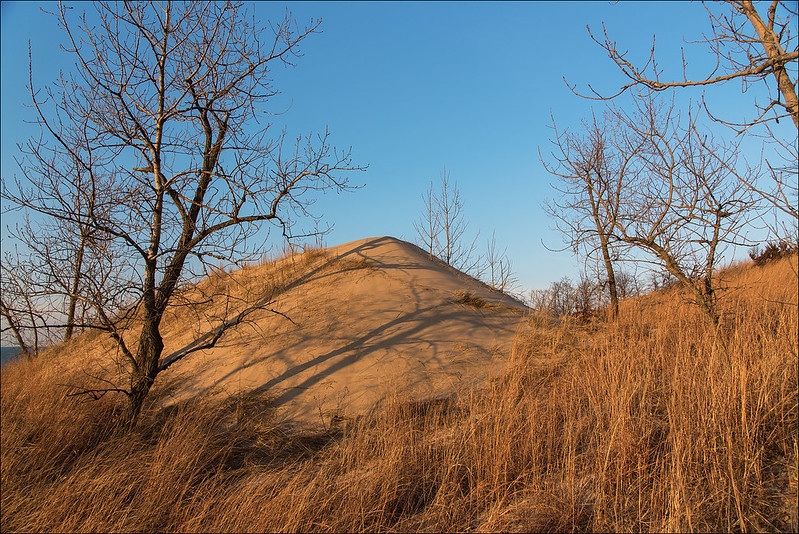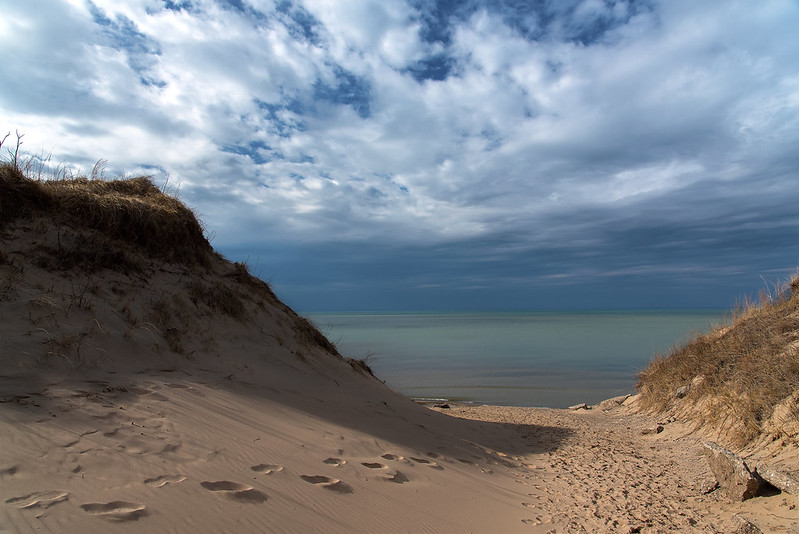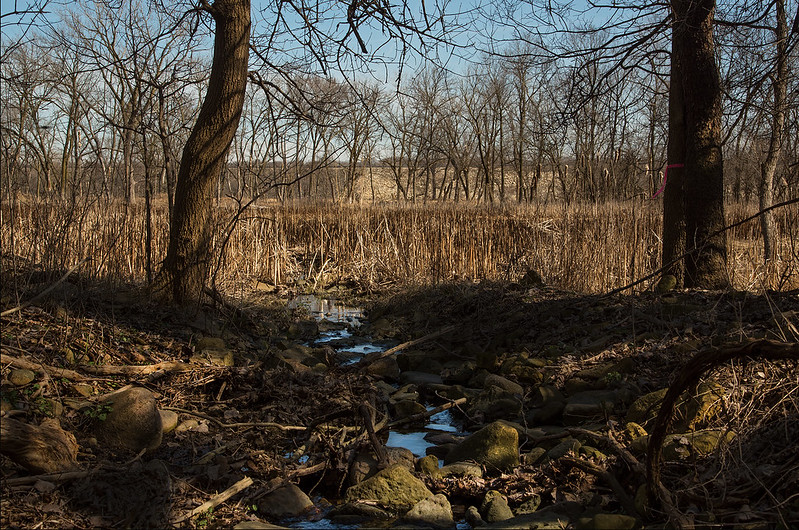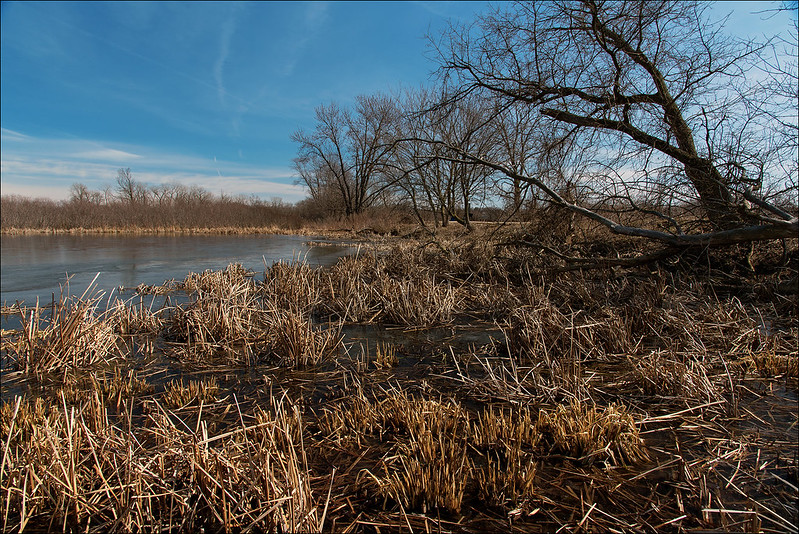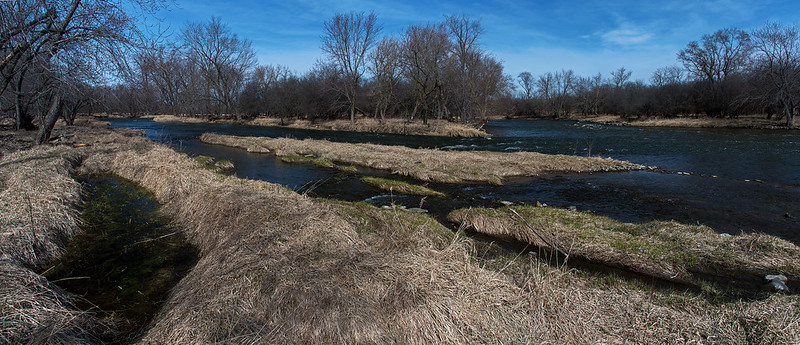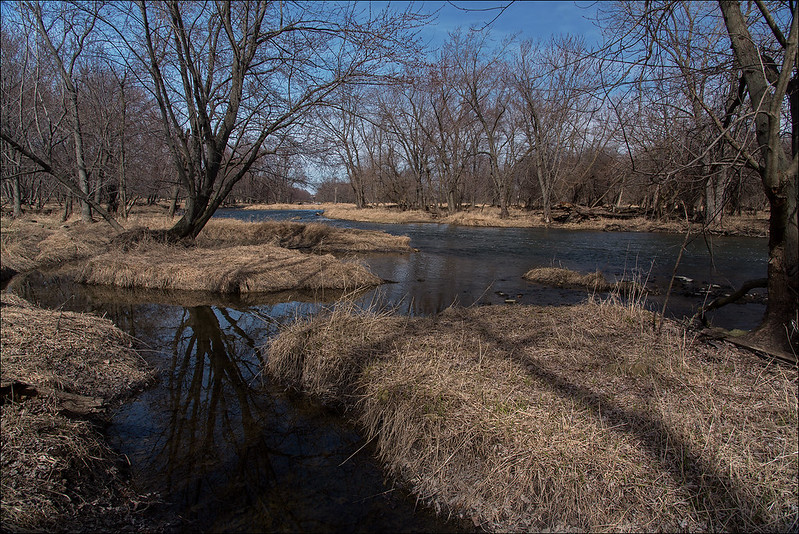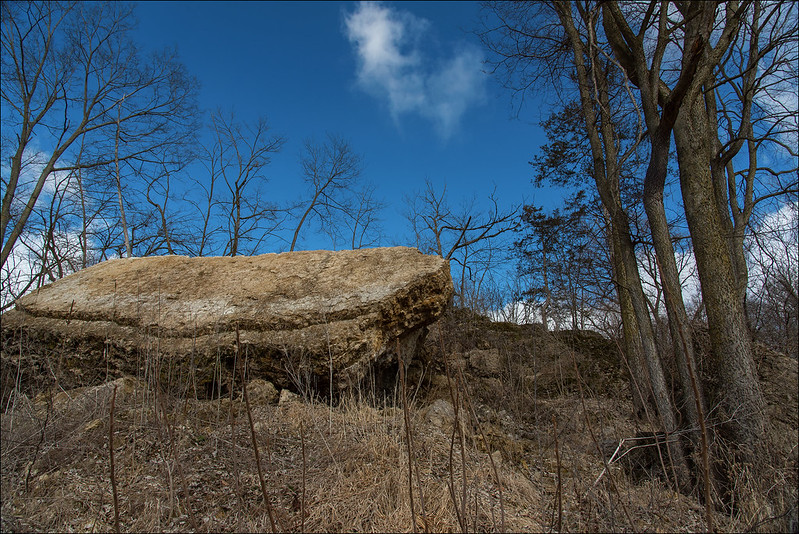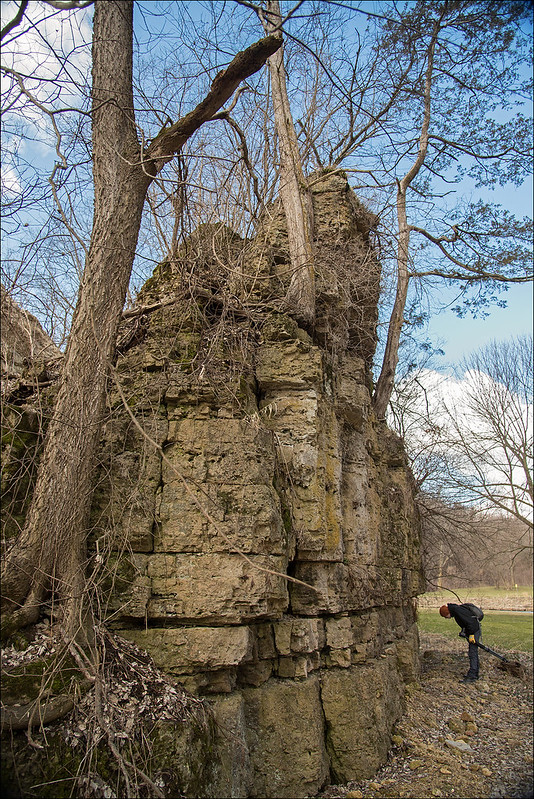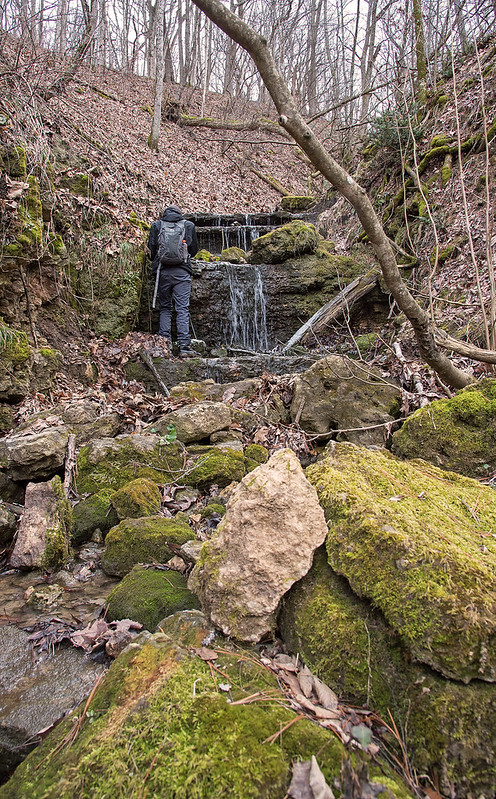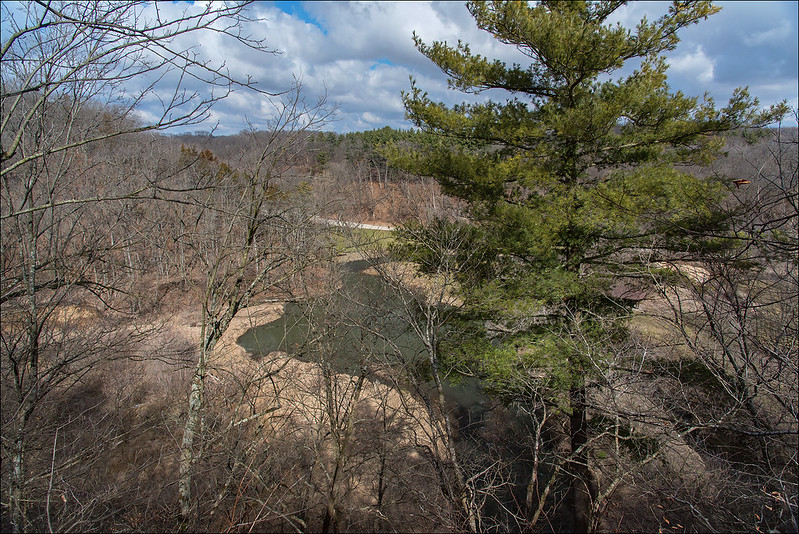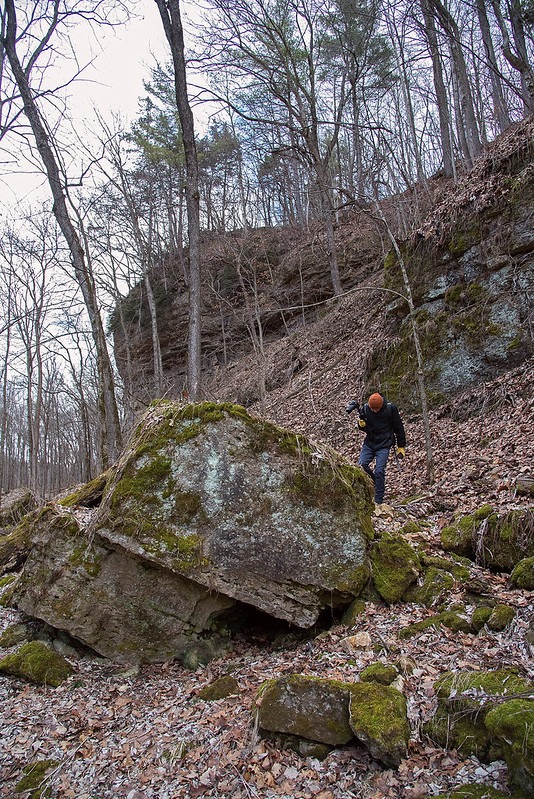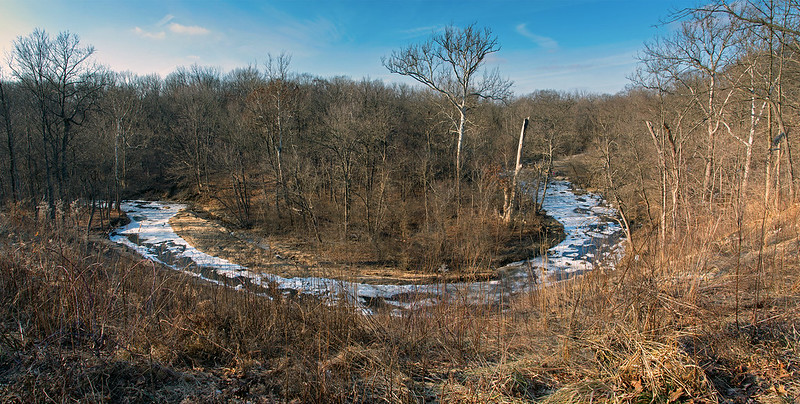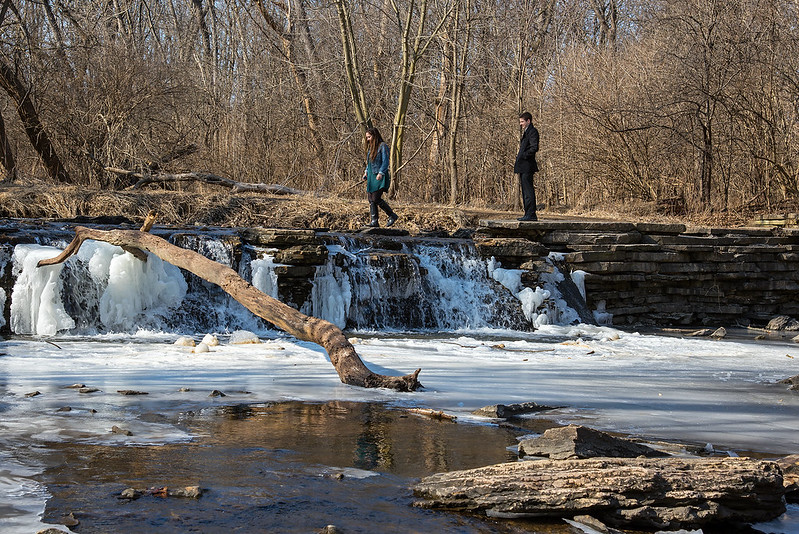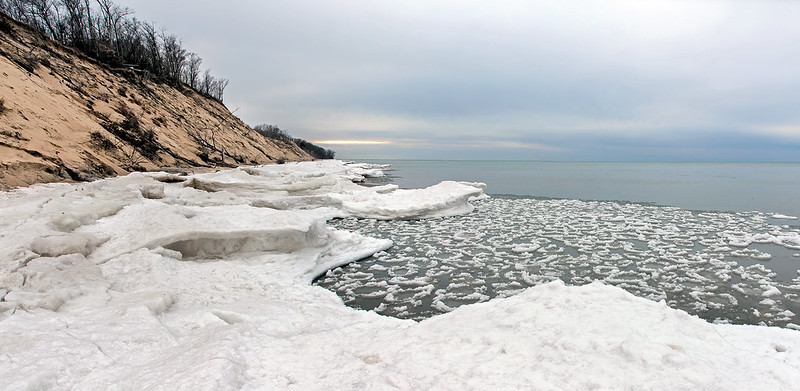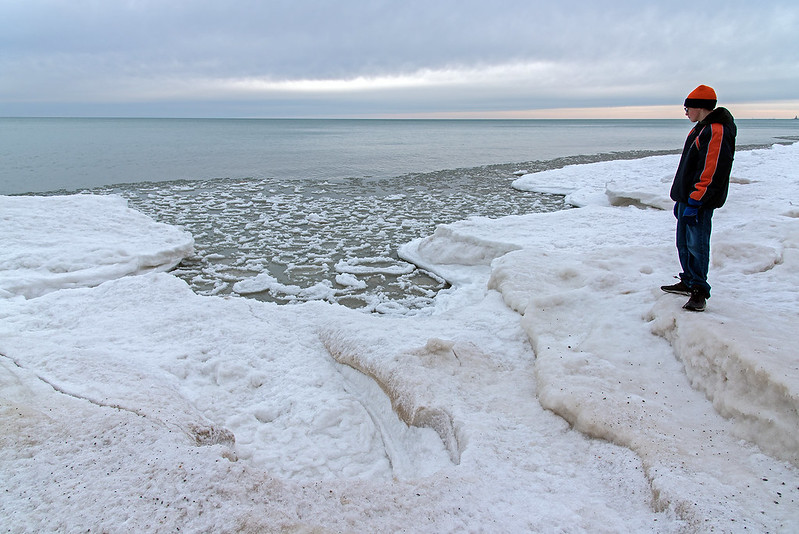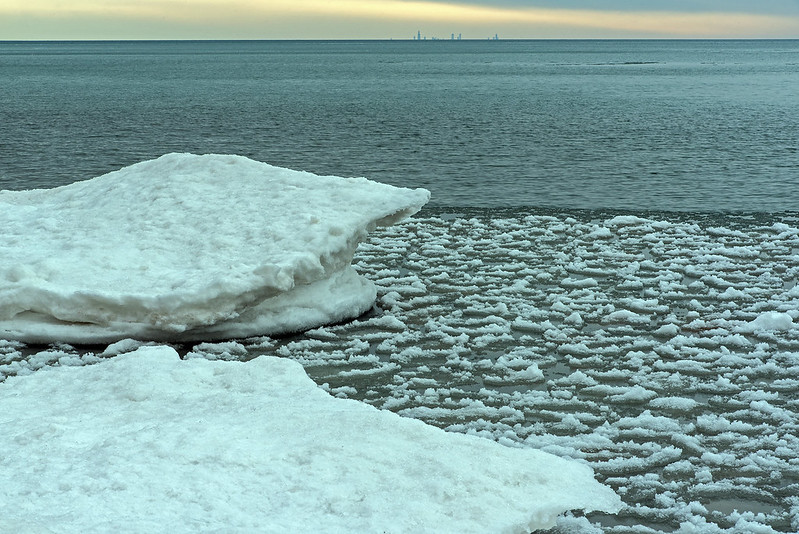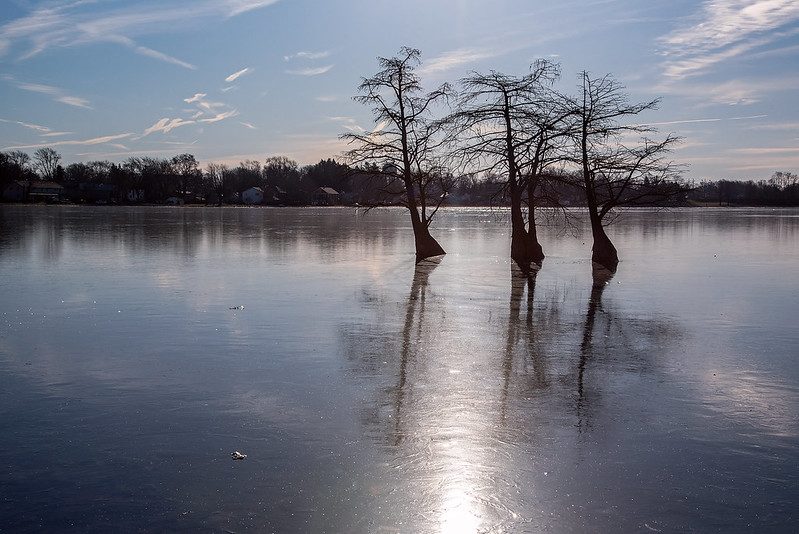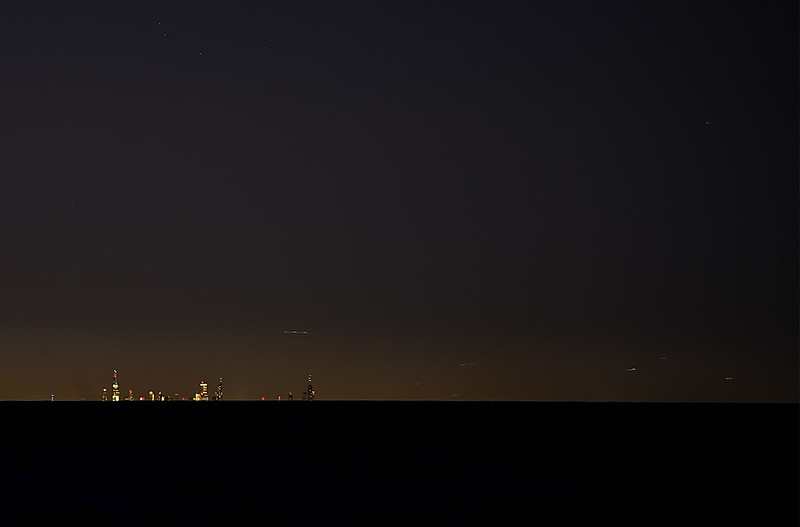
One of the main attractions at Devil's Lake State Park is a rock formation called Devil's Doorway. Set high above Devil's Lake, some 500 feet below, this formation is made of metamorphic rock created over a billion years ago from sandstone that was once the bottom of a sea. The actions of time, water, and ice have cracked the rock, sending large chunks down the hillside. What remains are beautiful rock formations dotting the bluffs surrounding the lake.

A short spur trail from the East Bluff Trail, the path takes visitors close to the steep drop offs near the formation, where the view is spectacular. Devil's Doorway seems to draw people to itself, as in the short time I visited, more than six people ventured off the trail and climbed up into the doorway itself.
A group of friends helped each other climb up the formation for a great view, a bit of adventure, and of course, a photograph. Carefully explaining which rocks to hold on to and which to jump down on, all three made it safely up and back down to the trail.

The area directly below the doorway is not a drop down hundreds of feet, but it is about 30 feet onto a small rock base, where one misstep can send the climber down hundreds of feet. So, perfectly safe it is not.
A rope still hangs from a previous climb, but not long enough to assist anyone with the ascent from the bottom. Who knows how long the rope has been there, and if it's weathered so much it would simply snap under the weight of a climber.
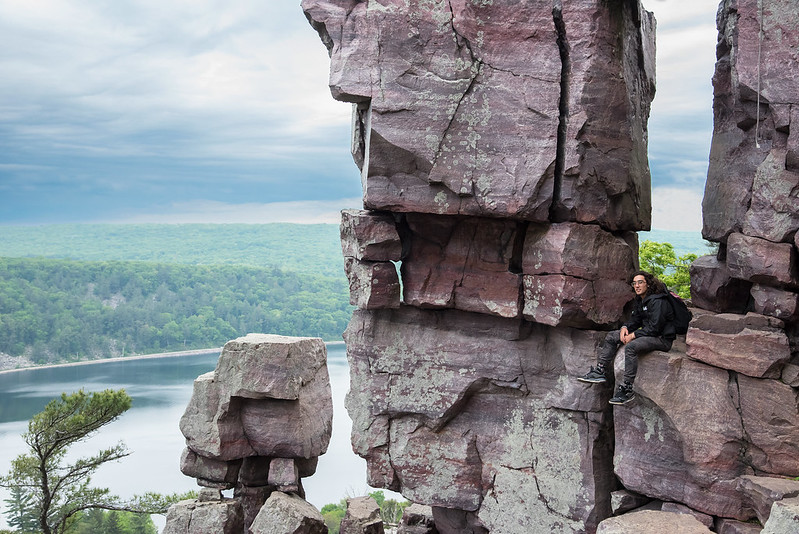
Certainly well worth the rocky climb up. Beginning the trail at the north part of the lake seems a bit easier of a climb - the south end is rocky and interesting to navigate down, but would be a tiring climb up with a backpack full of camera gear.

